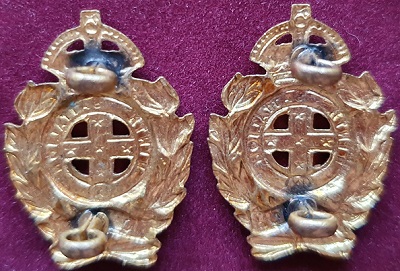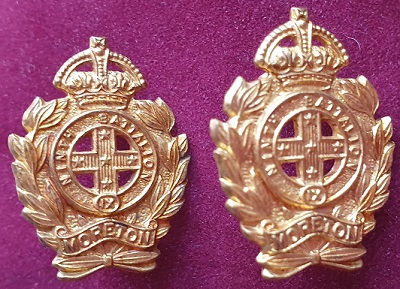Description
Description: 41st Battalion (The Byron Scottish Regiment) – White Metal collar badge (1948-53).
Maker’s Name: N/A
Condition: Very Good
Comments: 41st Battalion (The Byron Scottish Regiment) – White Metal collar badge (1948-53). Complete with 2 lugs.
During the First World War, this battalion had been formed in February 1916 at Bell’s Paddock in Brisbane, Queensland, with men drawn from Queensland and northern New South Wales. Attached to the 11th Brigade, 3rd Division, it took part in the fighting on the Western Front from November 1916 until the end of the war, during which time it took part in battles at Messines, Broodseinde, and Passchendaele in 1917. In early 1918, they took part in repulsing the German Spring Offensive, defending the railway near Amiens before taking part in the Allied Hundred Days Offensive which ultimately brought about an end to the war. The 41st Battalion’s final involvement in the fighting came in early October when they took part in the joint Australian-US operation along the St Quentin Canal. It was out of the line resting when the armistice was signed in November 1918 and was disbanded in May 1919. Losses during the war totaled 444 killed and 1,577 wounded. One member of the battalion, Bernard Sidney Gordon, received the Victoria Cross. Other decorations included: 1 CMG, 2 DSOs, 13 MCs and 3 bars, 12 DCMs, 82 MMs and 2 bars, 4 MSMs, 26 MIDs and 7 foreign awards.
In 1927 territorial designations were adopted and the battalion adopted the title 41st Battalion (The Byron Regiment). In 1929, compulsory training scheme was suspended by the Scullin Labor government, and this, combined with the economic hardships of the Great Depression led to a decline in the number of recruits. As a result the battalion was amalgamated with the 2nd Battalion to form the 2nd/41st Battalion. In 1933 these two units were delinked, however, the 41st Battalion was amalgamated with the 33rd Battalion to form the 33rd/41st Battalion. They remained linked until 1936 when tensions in Europe meant that the government decided to double the size of the Militia.
During the Second World War, the battalion served in a garrison role within Australia and did not see active service overseas, even though it was gazetted as an AIF battalion after the majority of its members volunteered to do so. In 1943, when the Australian Army began reallocating manpower resources, the battalion was amalgamated once more with the 2nd Battalion and they remained linked until 1946 when the demobilisation process began and the unit was disbanded.
In 1948, the Citizens Military Force was re-raised, albeit on a limited scale. The 41st Battalion was re-formed at this time, adopting the title 41st Infantry Battalion (The Byron Regiment), however, the following year its title was changed to The Byron Scottish Regiment. This remained the state of affairs until 1960, when the Pentropic divisional structure was introduced and the battalion became ‘E’ (Byron Scottish) Company, 1st Battalion, Royal Queensland Regiment.








